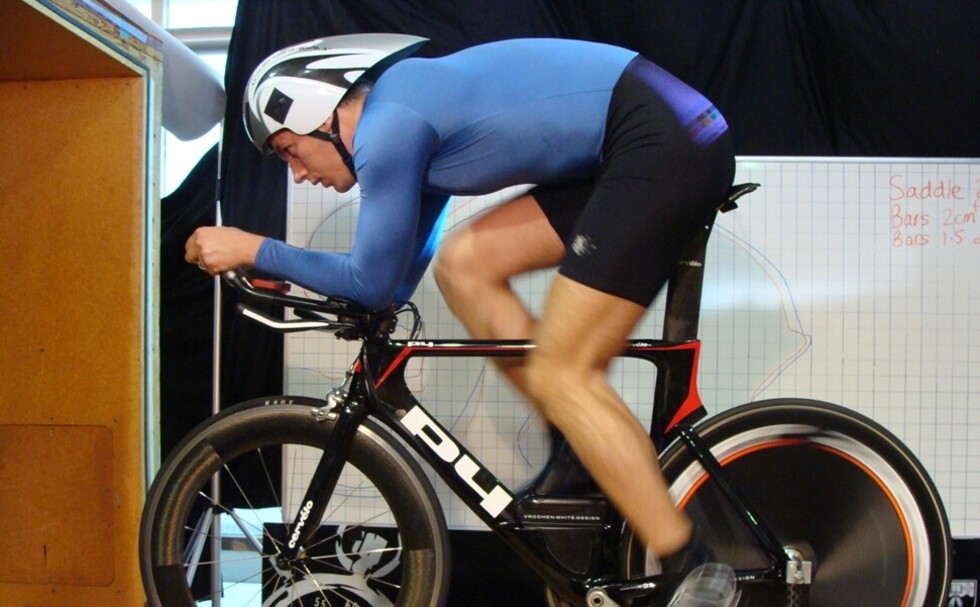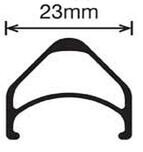There has been a lot of excitement about wide rims on road bikes in the last couple of years. Various claims have been made about the advantages of the concept and effusive reviews abound on the web.
For your edification I’ll summarise the claims and offer some history and perspective.
Claims about wide rims:
- New “technology”
- Lower Rolling Resistance for the tyres
- Better comfort
- Improved cornering
- Better aerodynamics
At this point wide rims sound like the panacea for all ills, so lets look a little more closely.
New Technology:
The Wolber Super Champion 58 clincher rim (first produced circa 1979-80) measured 22.8mm wide. The market settled on the 18-20mm width a few years later in the quest for lightness and trying to hold the tyre bead on more firmly. Wide tubulars go back much further.
A number of aphorisms spring to mind: “all that was old is new again” or perhaps “there is nothing new under the sun” – suffice to say – not new.
Lower rolling resistance for tyres:
One of the consequences of a wider bead seat is that the tyre does not sit as far out from the rim. This decreases the overall circumference which means that you will over read speed if your speedo is not adjusted. If you are doing a controlled experiment such as a rolling resistance test this needs to be corrected for. It appears that the early claims of lower RR were based on uncorrected tyre circumferences and no carefully run test has ever shown a benefit.
Better Comfort:
Here we come to a marketing masterstroke. One of the claimed benefits is that a lower likelihood of pinch flats allows the rider to run a lower tyre pressure. One of the most influential factors in equipment related comfort is tyre pressure. So by getting riders to run a lower pressure you increase the cushioning factor and attribute this improvement to the wide rims.
A lot of riders over-inflate their tyres so the advice to lower the pressure merely gets them to a level they could already have been using. It’s also not hard to fit wider tyres to standard width rims.
There is an additional element to this story though. You actually have to run lower pressure on wide rims to match the cushioning of the same tyre on a narrower rim. It turns out that having straighter sidewalls on the tyre decreases their elasticity, making the tyre vertically stiffer for a given level of inflation (Cervelo have tested this using the same 23mm tyre on different rims). Hed state that 11% lower inflation pressure is required with their 23mm wide C2 rims.
Improved Cornering:
The premise for this is based on the effect mentioned above – the straighter sidewalls stiffen the casing leading to less deformation and so the tyre ‘flops over’ less when cornering. Given that cornering by its very nature means that you are applying a lateral force on the tyre I’d be extremely surprised if the change in vertical stiffness offered much of a benefit here.
Better Aerodynamics:
And finally, the factor that we buy fancy wheels for. The idea is that a 23mm rim catches the airflow off a 23mm tyre better, thus reducing turbulence and making the wheel-tyre system faster.
The importance of smoothing the tyre-rim junction is well known. Tyres with thick lips on the tread have been shown to be worse aerodynamically than those with a smooth transition. And filling the space above the rim with silicon has repeatedly been shown to have an aero benefit.
When I was working on rim design a few years ago I started the process by selecting a tyre with low rolling resistance and a smooth tread-casing lip. I then had that tyre mounted on a rim, inflated and scanned to get a true profile for the CFD (computer simulation of a wind tunnel). That process led to a 20.5mm rim width to best catch the airflow from the 21.2mm tyre. Which matches well to the rule that Zipp had long espoused of having the tyre no more than 5% wider than the rim.
So in terms of optimising wheel aerodynamics when using a 23mm tyre (which will usually actually measure over 24mm), 23mm rims make a lot of sense.
However, whether a wide rim is actually the fastest option depends on the conditions and your speed. This chart from Zipp shows the performance of the 808 Firecrest (brake track slopes from 23.5 to 25.7mm wide) compared to the previous 808 version (brake track 18.6mm).
Clearly, if you are subject to high yaw conditions, the 808 FC is the faster option as it has amazing performance at over 10° of yaw. However, at Time Trial speed or on low wind days, the narrower (older) design is still faster. Of course, with the industry moving towards wider rims as a general rule, all the development will be around this format. So over time the wider designs are likely to surpass the narrower versions at all yaw angles just because that is where the big players are spending their money.
Conclusion:
Despite the way in which I’ve set out to debunk the myths around wide rims, I actually think they’re a good thing. For long distance triathlons or any event on rough roads the logical choice for comfort is wider tyres. Using wider rims mitigates the aerodynamic penalty of that choice. And if it’s windy the wide designs from Hed and Zipp are the fastest options anyway.
So while a wider brake track is not the panacea for all ills that some would have you believe, the re-adoption of the wide format has led to some very good things – wheel/tyre combinations that are more comfortable without sacrificing speed.

